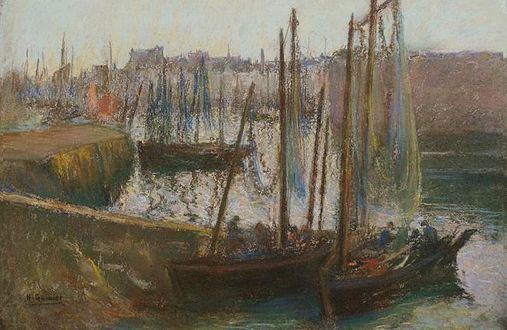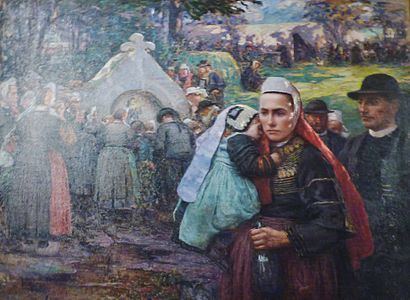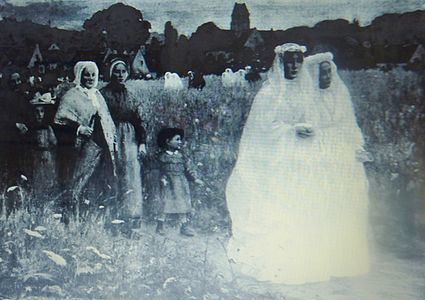 | ||
Died 1927, Neuilly-sur-Seine, France | ||
This is a translation of the Wikipedia article written in the French language.
Contents
Henri Guinier was a French artist born on 20 November 1867 in Paris. His parents were from Lorraine. His father was Simon Guinier. He died in October 1927 at Neuilly-sur-Seine.

Biography

Much due to his father's pressure, he joined the "École des Arts et Métiers" in Chalon-sur-Saône in 1883 as an engineering student, graduating in 1889 but then took courses at the Academie Julian and the École des beaux-arts in Paris, being attached to the studio of Benjamin Constant and Jules Lefebvre and threw himself into painting. In 1896 he was awarded second prize in the prix de Rome, followed by a gold medal at the Salon des artistes français in 1898. In that year he won a bursary which took him to Holland, Switzerland and Italy. He also won a silver medal at the great Paris 1900 "Exposition universelle".

In 1904 he married Hélène Glaçon and they had a son Michel and a daughter Annette. Michael was an engineer and worked on the Paris Métro. Annette was one of his favourite models. Michael was also an expert on musical organs.

It was in Paris that Henri Guinier made the acquaintance of Fernand Legout-Gérard who introduced him to Concarneau where he purchased a villa called Kerdorlett at Beuzec-Conq, by the beach and facing west. This became his summer residence whilst winters were spent at his house in Neuilly-sur-Seine. He became the president of the "Union artistique des Amis de Concarneau" whose membership included painters such as Alfred Guillou and Thomas Alexander Harrison

He was an excellent pastelist and colourist and painted many portraits, mostly of women. He painted landscapes especially involving the sea and mostly in the districts of Concarneau and the Pays Bigouden, as well as Faouët, at Vannes, at Paimpol and the Île de Bréhat.
He painted many subjects: the allegorical, genre works, nudes, portraits and the countryside and spent time in Italy, Holland, the Alps and the Pyrénées.
Henri Guinier received many public commissions including in 1909, with other artists, the decoration of the Neuilly-sur-Seine townhall for which he painted the compostition La Tapisserie. The Ministry of War commissioned him to paint scenes from the battlefield at Verdun where he completed several pastels.
From 1920 onwards, he passed part of the winters in the mountains and painted scenes in both Pau and Argelès-Gazost as well as in the valley of the Chamonix.
In 2007, the family gave their archives to the museum in Quimper- the "Musée départemental breton". In 2008, the museum of Faouët held a retrospective exhibition of his work.
